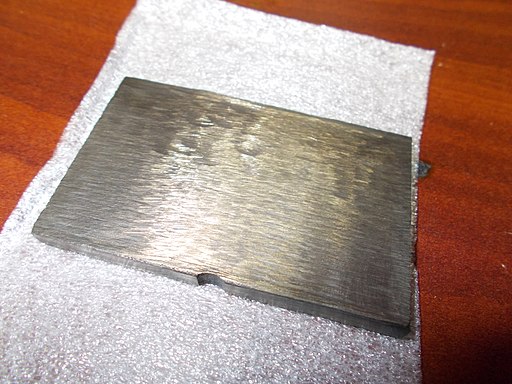Sign In
Applications of Exponential and Logarithmic Functions







| | 9 Theory slides |
| | 10 Exercises - Grade E - A |
| | Each lesson is meant to take 1-2 classroom sessions |
Catch-Up and Review
Here are a few recommended readings before getting started with this lesson.
Graphing in the (x,ln y) Coordinate Plane
Exponential functions have nonlinear graphs. In the diagram, the graph of y=2^x and some of its points are shown.


Tables, Logarithmic Models, and Exponential Models
Heichi and Ignacio are good friends. However, when it comes to mathematics, they are pretty competitive. Neither Heichi nor Ignacio admits that the other person might be more knowledgeable in math.

Instead of letting this silly argument go, they decide to duel! They will challenge each other by asking one math question to the other.
| x | y |
|---|---|
| 1 | 3 |
| 2 | ≈ - 0.47 |
| 3 | ≈ - 2.49 |
| 4 | ≈ - 3.93 |
| 5 | ≈ - 5.05 |
| x | y |
|---|---|
| 1 | 1k |
| 2 | 2k |
| 3 | 4k |
| 4 | 8k |
| 5 | 16k |
Solution
LHS-3=RHS-3
.LHS /(- 5).=.RHS /(- 5).
Rearrange equation

It is seen that the constant multiplier is 2. Also, the initial value is 1k, or just k. With this information, an exponential function can be written. y= k( 2)^(x-1) Ignacio pats himself on the back.
Carbon 14 in Vegetables
Heichi is upset that he lost to Ignacio in the last round. He decides to take a breather and turn to his favorite science book to practice some other problems. Here is one of his favorite topics: It is estimated that a preserved vegetable contains about 1 microgram (a millionth of a gram) of Carbon 14.
The amount of Carbon 14 in the preserved vegetable can be modeled by the following exponential function. C(t)=I (1/2)^(t5500) Here, t is the time in years that has passed since the vegetable's death, and I is the amount of Carbon 14 present in the vegetable at death, measured in micrograms. Heichi, feeling good about seeing a familiar topic, dives into solving the following problems.
Hint
Solution
t= 2000
C(2000)= 1
a/b=.a /500./.b /500.
(a/b)^m=a^m/b^m
LHS * 2^(411)=RHS* 2^(411)
Identity Property of Multiplication
Rearrange equation
Use a calculator
Round to 2 decimal place(s)
C(10 000)=1
With this information, the amount of Carbon 14 that was present in the living vegetable I can be found by substituting 10 000 for t and 1 for C(10 000).t= 10 000
C(10 000)= 1
a/b=.a /500./.b /500.
(a/b)^m=a^m/b^m
LHS * 2^(2011)=RHS* 2^(2011)
Identity Property of Multiplication
Rearrange equation
Use a calculator
Round to 2 decimal place(s)
C(t)= I/2
.LHS /I.=.RHS /I.
a=a^1
Uranium 238
Ignacio, feeling good about showing his prowess in math, goes to explore the chemistry lab. He sees none other than Heichi studying. Heichi invites Ignacio to see that Uranium 238 is the most common isotope of uranium found in nature. It also has many applications in nuclear technology. Uranium 238 decays exponentially and its half-life is about 4.5 billion years.
Ignacio feels a sense of joy that Heichi has shown him this.

Hint
Solution
t= 4.5
U(4.5)= 20
.LHS /40.=.RHS /40.
a/b=.a /20./.b /20.
(- a)b = - ab
| x | 40e^(- 0.154t) | y |
|---|---|---|
| 0 | 40e^(- 0.154( 0)) | 40 |
| 2 | 40e^(- 0.154( 2)) | ≈ 29.4 |
| 4 | 40e^(- 0.154( 4)) | ≈ 21.6 |
| 6 | 40e^(- 0.154( 6)) | ≈ 15.9 |
| 8 | 40e^(- 0.154( 8)) | ≈ 11.7 |
| 10 | 40e^(- 0.154( 10)) | ≈ 8.6 |

Modeling a Village's Population
Ignacio and Heichi see that this competition has turned ugly. They make a truce and decide to team up in studying for a geography test — together, as buddies.
However, the formulas did not allow the rivalry between Ignacio and Heichi to fade. While learning the concepts related to population, they find out that the population P of a small village in the north of Argentina is modeled by an exponential function. P(t)=500(1.04)^(2t) Here, t is the time in years that has passed since the foundation of the village in the year 2020. Heichi and Ignacio cannot help themselves and start challenging each other.
Hint
Solution
P(t)= 3037
.LHS /500.=.RHS /500.
Use a calculator
log_c a = log_b a/log_b c
Use a calculator
.LHS /2.=.RHS /2.
Rearrange equation
Round to nearest integer
Relation Between Exponential and Linear Models
Recall the exploration seen at the beginning. In general, a set of more than two points (x,y) fits an exponential model if and only if the set of transformed points (x,ln y) fits a linear model. For example, consider the following function. y=2^x This function can be graphed on an (x,y) coordinate plane.

ln(LHS)=ln(RHS)
ln(a^b)= b*ln(a)
| x | x ln 2 | ln y=xln 2 |
|---|---|---|
| - 2 | - 2ln 2 | ≈ - 1.39 |
| - 1 | - 1ln 2 | ≈ - 0.69 |
| 0 | 0ln 2 | 0 |
| 1 | 1ln 2 | ≈ 0.69 |
| 2 | 2ln 2 | ≈ 1.39 |

Visual Near Point

Answer
Scatter Plot:

Example Exponential Model: y=4.137(1.054)^x
Hint
To create the scatter plot make a table of values and plot the obtained points on an (x,ln y) coordinate plane. To write the exponential model use any two of the obtained points.
Solution
To make the scatter plot, a table of data pairs (x,ln y) will be created using the given information.
| x | y | ln y |
|---|---|---|
| 20 | 12 | ln 12≈ 2.48 |
| 30 | 15 | ln 15≈ 2.71 |
| 40 | 25 | ln 25≈ 3.22 |
| 50 | 40 | ln 40≈ 3.69 |
| 60 | 100 | ln 100≈ 4.61 |
Next, the obtained points will be plotted on an (x,ln y) coordinate plane. Since all the values are positive, only the first quadrant will be considered.

The points are not collinear. However, they lie close to a straight line. Consider the line passing through the first and last points.

Substitute ( 20,ln 12) & ( 60,ln 100)
a^(m+n)=a^m*a^n
Commutative Property of Multiplication
a^(m* n)=(a^m)^n
Use a calculator
Round to 3 decimal place(s)
Using Technology
While it is extremely impressive to do math by hand, an exponential model for the last example can also be found by using a graphing calculator. Recall the given data points.
| x | y |
|---|---|
| 20 | 12 |
| 30 | 15 |
| 40 | 25 |
| 50 | 40 |
| 60 | 100 |
It was previously discussed that if graphing the data points in the form (x, ln y) results in a linear pattern, then an exponential function is a good model for the data points in the form (x,y). To find the equation of the exponential model using a graphing calculator, press STAT, choose EDIT,
and enter the values in the first two columns, L1 and L2.


Now, to find the values of ln y, place the cursor in the heading of L3 and press LN. After that, press 2ND, and then 2 before finally closing the parentheses. By pressing ENTER, L3 will be filled automatically with the corresponding values for ln y.


Having entered the values, they can be plotted in a scatter plot by pressing 2nd and Y=. Then, choose one of the plots in the list. Make sure to turn the desired plot ON. Choose the type to be a scatterplot, and assign L1 and L3 as XList and YList, respectively. Any mark can be picked.


After this, press GRAPH. If needed, the scale and the minimum and maximum x- and y-values can be adjusted by pressing WINDOW.

The points approximate a line. Therefore, an exponential function is an appropriate model. The best fitting exponential function for the given data can be found by performing an exponential regression. To do this press STAT, and from the CALC
menu choose the exponential regression option.


Here, a≈ 3.5 and b≈ 1.054, rounded to three decimal places. With this information, the exponential function can be written. y=3.5(1.054)^x
Note that the value of a is not the same as in the last example, but the value of b is exactly the same.
Atmospheric pressure, which is measured in atmospheres, decreases as altitude increases. At sea level, the average air pressure is 1 atmosphere. The table shows the pressure p in atmospheres at certain altitudes h, measured in kilometers.
| p | h |
|---|---|
| 1 | 0 |
| 0.55 | 5 |
| 0.25 | 10 |
| 0.12 | 15 |
| 0.06 | 20 |
| 0.02 | 25 |
Let's use a graphing calculator to find a logarithmic model of the form h=a+bln p that fits the table. To do so, we need to start by pushing the STAT button, choosing the first option Edit,
and entering the values from the table. The first column represents the atmospheric pressure p and the second column represents the altitude h.
Next, push STAT again, go to CALC,
and scroll down and select the ninth option LnReg.
Then, make sure that L_1
and L_2
are assigned to Xlist
and Ylist,
respectively, and select Calculate.
After doing this, we should see the coefficients of the logarithmic model.
Therefore, rounded to two decimal places, we found that a≈ 0.86 and b≈ - 6.45. Let's use this information to write our logarithmic model. Do not forget that in our context, the independent variable is p and the dependent variable is h. h=0.86+(- 6.45) ln p ⇕ h=0.86-6.45 ln p
To estimate the altitude when the pressure is 0.75 atmospheres, we will use the model found in Part A. Let's substitute 0.75 for p and evaluate the right-hand side of the equation.
When the air pressure is 0.75 atmospheres, the altitude is about 2.7 kilometers.


